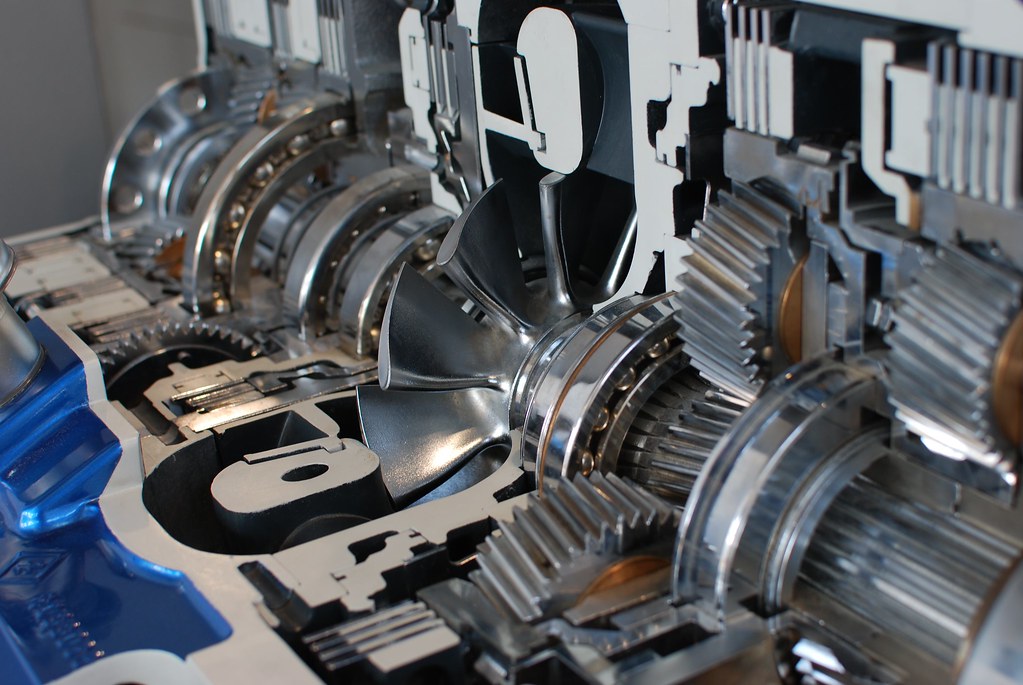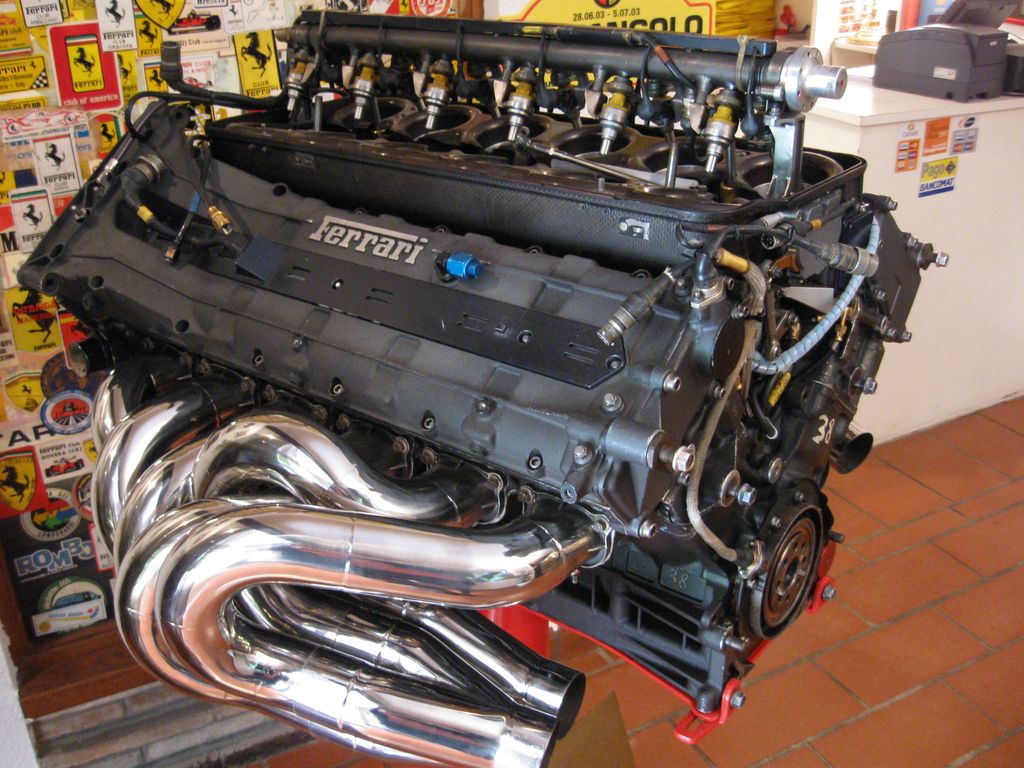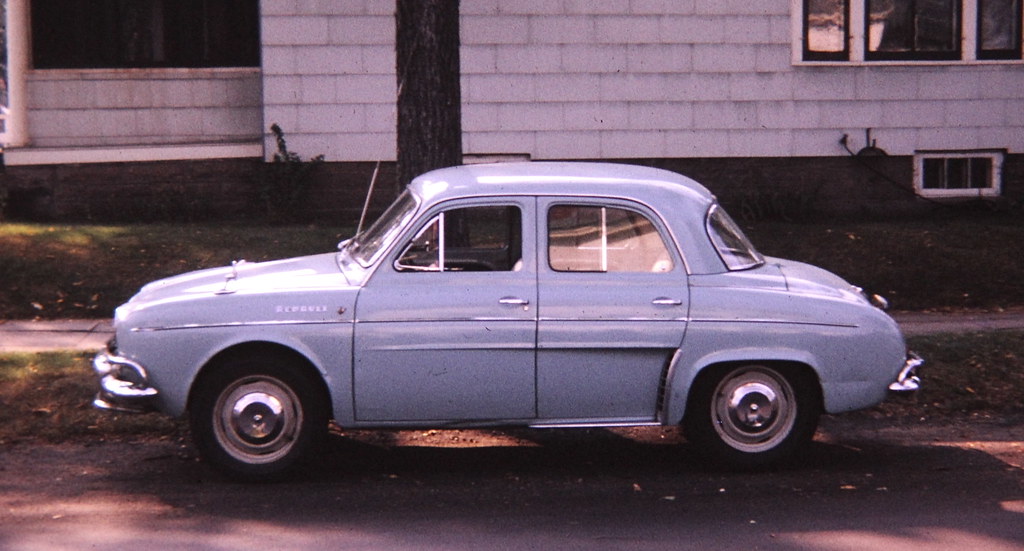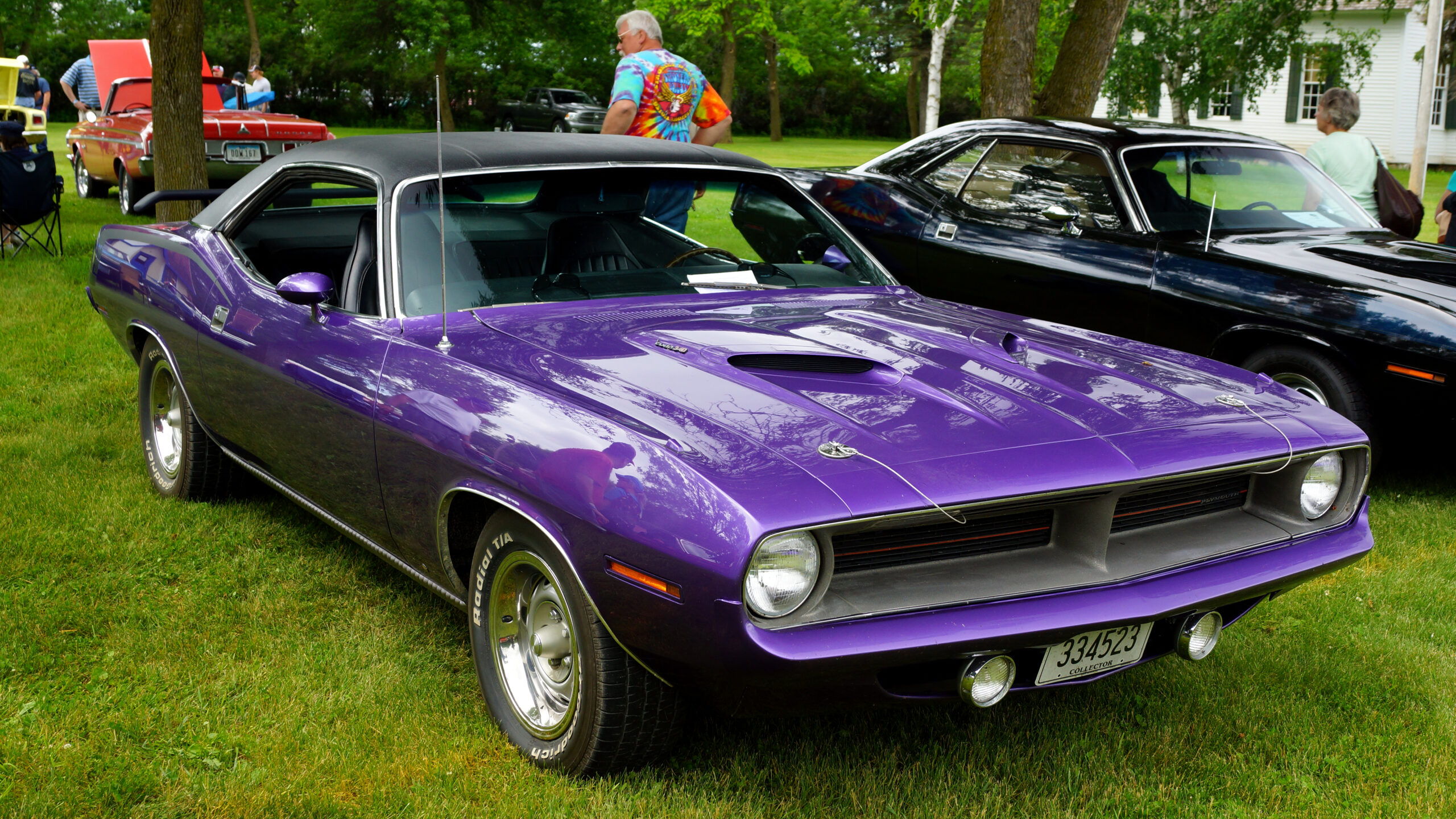
When the conversation turns to pony cars, a few legendary names inevitably dominate the discussion. Iconic marques like the Ford Mustang and Chevrolet Camaro have carved out an indelible place in automotive history, often overshadowing a whole world of equally captivating, albeit less celebrated, machines. Yet, beneath the surface of popular acclaim lies a treasure trove of vehicles that offer unique styles, compelling performance, and a rich history, all waiting to be rediscovered by the discerning enthusiast.
These are the cars that might not immediately jump to mind when you think of horsepower and classic lines, but they absolutely should. Many were formidable competitors in their prime, offering impressive specs and distinctive character that set them apart, even if they didn’t achieve the same commercial stardom or legendary status. Their stories are a testament to the diverse and dynamic landscape of the pony car wars, reminding us that true automotive passion extends beyond the well-trodden paths.
So, buckle up and prepare to embark on an exhilarating journey through the annals of automotive history. We’re about to shine a much-deserved spotlight on some of the most underrated pony cars to ever grace the asphalt – vehicles that truly deserve a second look. Get ready to have your perceptions challenged and your automotive wish list unexpectedly expanded as we unveil the first seven of these magnificent, often-forgotten machines.
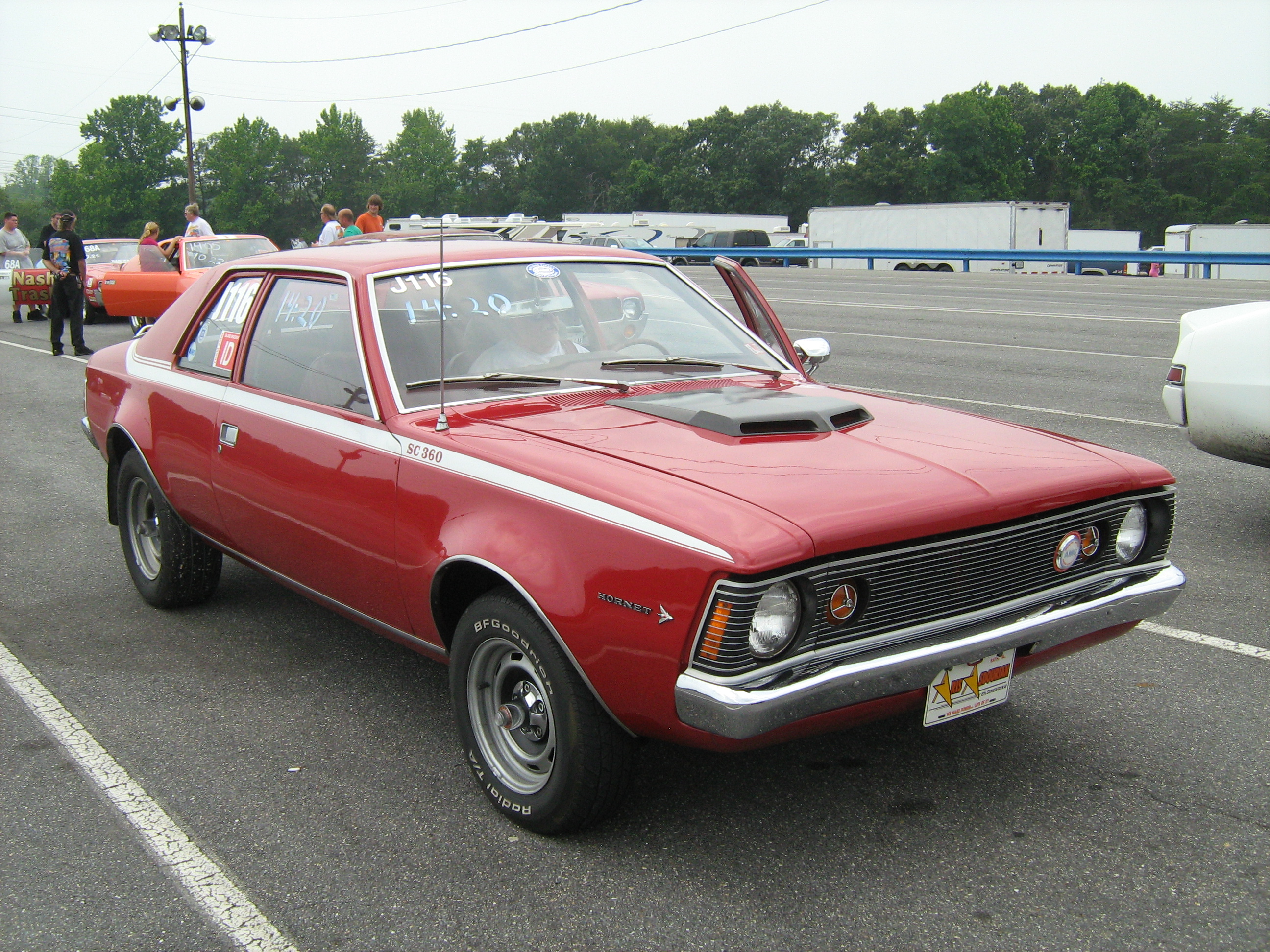
1. **AMC Hornet S/C 360**Steering away from the usual suspects, the AMC Hornet S/C 360 emerges as a genuine hidden gem from an era brimming with muscle. This unique model, produced in 1971, stands out not just for its performance but for its sheer rarity; a mere 784 units ever left the factory floor. Such limited production numbers immediately earmark it as a prized find for collectors and enthusiasts looking for something truly distinctive.
Beneath its unassuming exterior, the Hornet S/C 360 housed a potent 360 cubic inch V8 engine. This powerplant was capable of delivering approximately 245 horsepower, a respectable figure for its time, especially when paired with the car’s relatively lightweight body. The combination resulted in a driving experience that was not only engaging but genuinely fun, offering a lively and responsive ride that often caught drivers by surprise.
Despite its brief production run and the tendency for it to be overshadowed by more heavily marketed vehicles, the Hornet S/C 360 holds a significant and unique place in muscle car history. It’s a testament to AMC’s ability to punch above its weight, delivering a package that combined rarity with genuinely underrated performance. For those in the know, this car is a standout, an authentic piece of automotive heritage that continues to captivate with its blend of scarcity and capability.
Read more about: 15 Classic Cars You Might Want To Skip: An Expert Guide for Discerning Collectors
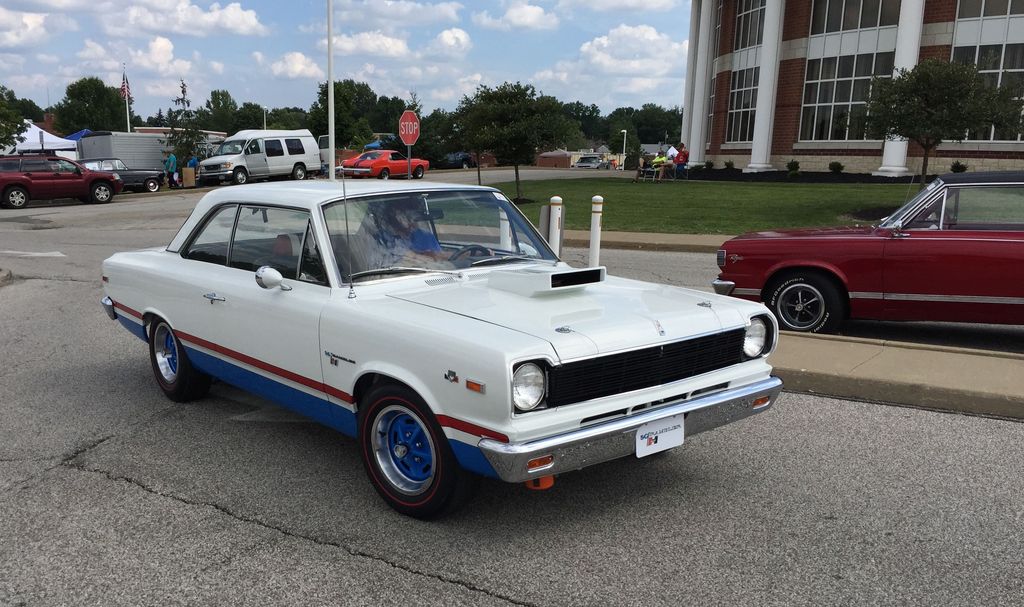
2. **S/C Rambler**Another compelling entry from American Motors Corporation that often flies under the radar is the S/C Rambler, a truly unique player in the pony car world. Introduced in 1969, AMC engineered this model with a clear objective: to go head-to-head with the dominant names of the muscle car era. Its aggressive styling and focused performance intent made it a serious contender, though its story is less commonly told.
Under the hood, the S/C Rambler was far from understated. It boasted a formidable 390 cubic inch V8 engine, which unleashed an impressive 315 horsepower. What made this even more remarkable was that all this power was deftly packaged into a surprisingly lightweight frame, allowing the S/C Rambler to achieve a level of agility that belied its muscular presence. It was a finely tuned machine, ready to tackle both the drag strip and the open road with equal prowess.
Visually, the S/C Rambler was impossible to ignore, showcasing a bold red, white, and blue paint scheme that was both patriotic and profoundly aggressive. Complementing this striking livery was a distinctive hood scoop, signaling its performance intentions unequivocally. Offered at an approximate price of $3,000 back in its day, it represented incredible value for enthusiasts seeking strong performance without the premium price tag. Though it has largely remained under the radar since, the S/C Rambler undeniably deserves a prominent spot in any discussion of truly great, overlooked pony cars.
Car Model Information: 2024 Ford F-150 XLT
Name: American Motors Corporation
Logo: American-motors.svg
LogoUpright: 0.75
LogoCaption: Logo from 1970 until 1987
Defunct: [object Object]
Fate: Jeep-Eagle
Predecessor: Hudson Motor Car Company,Thomas B. Jeffery Company,Nash Motors,Kaiser Jeep,Kaiser Motors,Willys
Successor: Chrysler,Eagle (automobile),Jeep-Eagle
Founder: George W. Mason
Foundation: [object Object]
Location: American Center
Industry: Automotive industry
KeyPeople: George W. Romney,Roy Abernethy,Robert B. Evans,Roy D. Chapin Jr.,Dick Teague
Products: Automobiles,Military vehicles,Buses and delivery vehicles,Sport utility vehicles,Major home appliances,Commercial refrigeration,Lawn care products
Parent: Chrysler Corporation
Subsid: Kelvinator,Vehículos Automotores Mexicanos,AM General,Shinjin Motors,Wheel Horse,Arab American Vehicles (1977–1987),Beijing Benz
Brands: AMC (1966–1987),AM General,Hudson Motor Car Company,Jeep,Metropolitan (1958–1962),Nash Motors,Rambler (automobile)
Categories: 1954 establishments in Michigan, 1988 disestablishments in Michigan, All Wikipedia articles in need of updating, All articles needing additional references, All articles that may contain original research
Summary: American Motors Corporation (AMC; commonly referred to as American Motors) was an American automobile manufacturing company formed by the merger of Nash-Kelvinator Corporation and Hudson Motor Car Company on May 1, 1954. At the time, it was the largest corporate merger in U.S. history.
American Motors’ most similar competitors were those automakers that held similar annual sales levels, such as Studebaker, Packard, Kaiser Motors, and Willys-Overland. Their largest competitors were the Big Three—Ford, General Motors, and Chrysler.
American Motors’ production line included small cars—the Rambler American, which began as the Nash Rambler in 1950, Hornet, Gremlin, and Pacer; intermediate and full-sized cars, including the Ambassador, Rambler Classic, Rebel, and Matador; muscle cars, including the Marlin, AMX, and Javelin; and early four-wheel drive variants of the Eagle and the Jeep Wagoneer, the first true crossovers in the U.S. market.
Regarded as “a small company deft enough to exploit special market segments left untended by the giants”, American Motors was widely known for the design work of chief stylist Dick Teague, who “had to make do with a much tighter budget than his counterparts at Detroit’s Big Three”, but “had a knack for making the most of his employer’s investment”.
After periods of intermittent independent success, Renault acquired a significant interest in American Motors in 1979, and the company was ultimately acquired by Chrysler in 1987.
Get more information about: American Motors Corporation
Buying a high-performing used car >>>
Brand: American Motors Corporation Model: S/C Rambler
Price: $41,604 Mileage: 9,645 mi.
Read more about: 15 Classic Cars You Might Want To Skip: An Expert Guide for Discerning Collectors
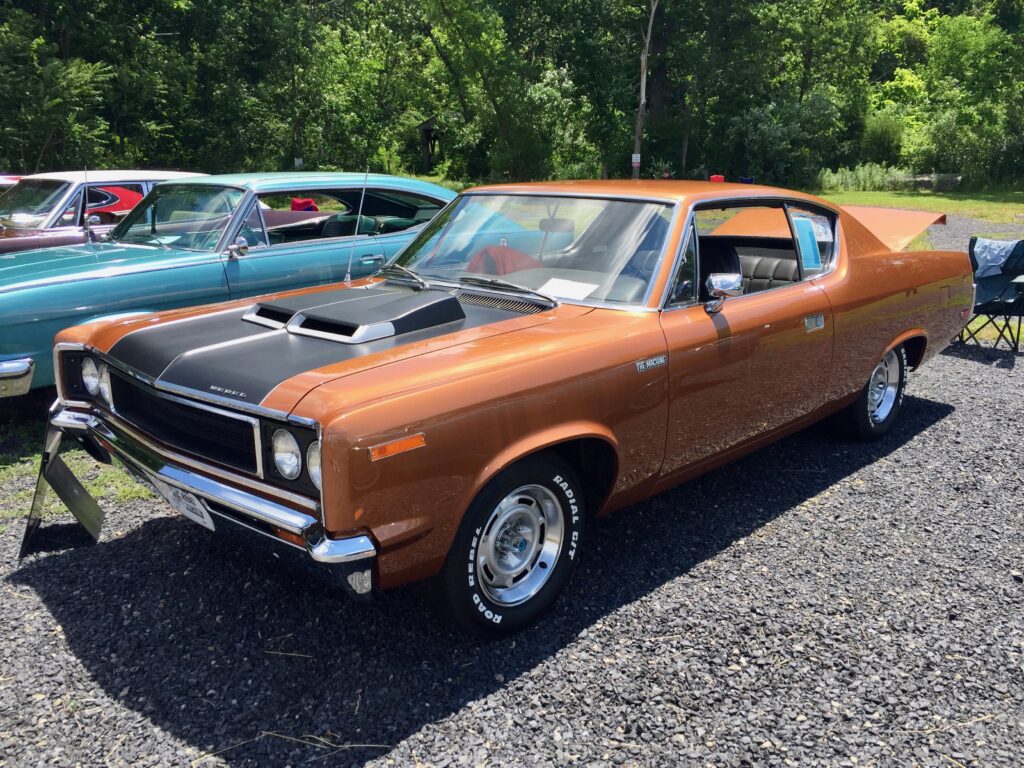
3. **AMC Rebel Machine**The AMC Rebel Machine stands as a classic example of American muscle that has, unfortunately, been denied the widespread recognition it so justly deserves. Launched in 1970, this vehicle was engineered with a no-nonsense approach to performance, promising a driving experience that was both powerful and memorable. Its specifications alone should be enough to turn heads, yet it often remains in the shadow of its more famous contemporaries.
Powering the Rebel Machine was a robust 390 cubic-inch V8 engine, an absolute powerhouse that delivered a staggering 340 horsepower. This substantial output allowed the car to sprint from 0 to 60 mph in approximately 6.5 seconds, a highly competitive figure for its time and a clear indicator of its performance pedigree. It wasn’t just built to look fast; it was built to truly be fast, offering exhilarating acceleration that delighted drivers.
Beyond its raw power, the Rebel Machine commanded attention with its eye-catching style. It featured bold stripes and a distinctly muscular stance that left no doubt about its intentions. Despite its impressive performance figures and unique aesthetic, this model frequently finds itself overshadowed by other well-known muscle cars. It represents a genuine hidden gem, an ideal choice for collectors and enthusiasts who appreciate a blend of potent power and a distinctive design that sets it apart from the mainstream.
Car Model Information: 2024 Ford F-150 XLT
Caption: 1968 AMC Rebel 770 station wagon
Name: AMC Rebel
Aka: Australia,Mexico,Europe
Manufacturer: American Motors Corporation
Production: 1967–1970 (US market)
ModelYears: 1967–1970 (US market)
Assembly: Australia
Class: Mid-size car
BodyStyle: sedan (car),convertible,hardtop,4-door sedan,station wagon
Engine: 232 CID
Abbr: on approx.
Transmission: Manual transmission,Overdrive (mechanics),4-speed manual floor or console,Automatic transmission,3-speed “Shift-Command” on console
Layout: Front-engine, rear-wheel drive layout
Wheelbase: 114 in
Length: {{convert,197,in,mm,0,abbr=on
Width: 77.29 in
Height: 53.5 in
Weight: 3500 lb
Platform: AMC’s “senior cars”
Predecessor: Rambler Classic
Successor: AMC Matador
Related: AMC Ambassador
Categories: 1970s cars, AMC vehicles, All articles with dead external links, Articles with dead external links from July 2023, Articles with permanently dead external links
Summary: The AMC Rebel (known as the Rambler Rebel in 1967) is a midsized car produced by American Motors Corporation (AMC) from the 1967 until the 1970 model year. It replaced the Rambler Classic. A similar AMC Matador line replaced the Rebel models, starting with the 1971 model year.
The Rebel was positioned as the high-volume seller in the independent automaker’s line of models. The Rebel was also available in several specialty models, including station wagons featuring themed trim and luxury equipment offered only in selected geographical regions. A high-performance, low-priced muscle car version was produced in 1970, the Machine, which is most recognized in its flamboyant white, red, and blue trim.
The Rebel is the shorter-wheelbase, intermediate-sized version of the longer-wheelbase, full-sized Ambassador line.
The Rebel was built at AMC’s West Assembly Line (along with the Ambassador) in Kenosha, Wisconsin, and in Brampton, Ontario, Canada (Bramalea – Brampton Assembly Plant).
The Rebel was also assembled from Complete Knock-down (CKD) kits under license in Europe (by Renault in 1967), in Mexico (by Vehiculos Automotores Mexicanos), in Costa Rica by Purdy Motor; and from Semi Knockdown kits (SKD) in Australia (by Australian Motor Industries), and in New Zealand (by Campbell Motor Industries). Although the Rambler name was discontinued on the Rebel in the U.S. and Canadian markets after the 1967 model year, the cars continued to be sold in international markets under the historic “Rambler” brand.
Get more information about: AMC Rebel
Buying a high-performing used car >>>
Brand: AMC Model: Rebel Machine
Price: $41,604 Mileage: 9,645 mi.
Read more about: From Anemic to Awkward: Unmasking 15 Muscle Cars That Truly Missed the Mark – And Why We Can’t Forget Them

4. **Dodge Daytona IROC R/T**Shifting gears to a slightly later era, the Dodge Daytona IROC R/T emerges as a bona fide hidden gem from the early 1990s. This particular iteration of the Daytona, produced exclusively from 1992 to 1993, is remarkably rare, with only 553 units ever manufactured. Its scarcity alone makes it a highly sought-after piece of automotive history for those who appreciate uniqueness and the thrill of discovery.
What truly set the Daytona IROC R/T apart was its powertrain: a turbocharged 3.0-liter V6 engine. This sophisticated powerplant punched well above its weight, delivering a robust 224 horsepower. Coupled with its distinctly aggressive styling and an unmistakably sporty vibe, it carved out a unique niche for itself, distinguishing it from many other pony cars and sports coupes available during its brief production window.
Drivers fortunate enough to experience this rare machine truly appreciated its performance capabilities, especially when equipped with the optional five-speed manual transmission, which allowed for a more engaging and connected driving experience. The Dodge Daytona IROC R/T represents a fascinating chapter in automotive development, a unique piece of history that few have had the privilege to encounter on the road. For any enthusiast given the opportunity, it is absolutely an experience not to be missed.
Car Model Information: 2017 Dodge Charger Daytona 392
Caption: 1991 Dodge Daytona C/S
Predecessor: Dodge Challenger#Second generation (1978–1983)
Successor: Dodge Avenger,Plymouth Laser,Chrysler LeBaron#Third generation coupe/convertible (1987–1995)
Name: Dodge Daytona
Manufacturer: Dodge
Production: October 1983–February 1993
ModelYears: 1984–1993
Assembly: St. Louis, Missouri,Sterling Heights, Michigan
Class: Sports car
Layout: Front-engine, front-wheel-drive layout
Engine: ubl
Transmission: Manual transmission
Platform: Chrysler G platform
BodyStyle: hatchback
Wheelbase: 97.0 in
Abbr: on
Length: 179.2 in
Height: 50.1 in
Width: 69.3 in
Aka: Chrysler Laser,Chrysler Daytona,Chrysler GS
Designer: Bob Ackerman
Categories: 1990s cars, All articles needing additional references, All articles with unsourced statements, Articles needing additional references from December 2018, Articles with short description
Summary: The Dodge Daytona is an automobile which was produced by the Chrysler Corporation under their Dodge division from 1984 until 1993. It was a front-wheel drive hatchback based on the Chrysler G platform, which was derived from the Chrysler K platform. The Chrysler Laser was an upscale rebadged version of the Daytona. The Daytona was restyled for 1987, and again for 1992. It replaced the Mitsubishi Galant-based Challenger, and slotted between the Charger and the Conquest. The Daytona was replaced by the 1995 Dodge Avenger, which was built by Mitsubishi Motors. The Daytona derives its name mainly from the Dodge Charger Daytona, which itself was named after the Daytona 500 race in Daytona Beach, Florida.
Get more information about: Dodge Daytona
Buying a high-performing used car >>>
Brand: Dodge Model: Daytona
Price: $37,998 Mileage: 29,806 mi.
Read more about: Unearthing Hidden Gems: 14 Overlooked Muscle Cars That Offer Serious Performance Without Breaking the Bank for Savvy Collectors

5. **Chevy SS (Pontiac G8 GXP)**In the realm of modern muscle, the Chevy SS, a vehicle that shares much of its DNA with the acclaimed Pontiac G8 GXP, stands as a surprisingly hidden gem. Often overlooked due to its understated design, this sedan packs a serious punch that belies its seemingly innocuous appearance. For those in the know, it represents a remarkable blend of practicality and outright performance, making it a compelling, albeit discreet, choice.
At the heart of the Chevy SS beats a formidable 6.2-liter V8 engine, a powerhouse capable of churning out an impressive 415 horsepower and an equally significant 415 lb-ft of torque. This robust powertrain ensures that the SS delivers thrilling acceleration, propelling the car from 0 to 60 mph in a blistering 4.5 seconds. Such speed is genuinely surprising for a full-size sedan, placing it firmly in the territory of dedicated sports cars.
Beyond its straight-line speed, enthusiasts appreciate the Chevy SS for its smooth ride and responsive handling, attributes largely owing to its well-engineered rear-wheel-drive layout. Its somewhat subtle design often causes it to fly under the radar, leading many to overlook its exceptional capabilities. However, for those seeking a practical daily driver that can also double as an exhilarating muscle car, the Chevy SS is undoubtedly a vehicle worthy of serious consideration, offering performance that is anything but ordinary.
Car Model Information: 2025 Chevrolet Blazer EV eAWD SS
Name: Chevrolet SS
Caption: 2014 Chevrolet SS
Aka: Holden Commodore (VF)
Manufacturer: Chevrolet
Production: 2013-2018
ModelYears: 2014-2017
Assembly: Adelaide, South Australia
Class: Full-size car
BodyStyle: sedan (car)
Layout: Automobile layout
Platform: GM Zeta platform
Engine: General Motors LS-based small-block engine#LS3,V8 engine
Transmission: GM 6L80 transmission,automatic transmission
Wheelbase: 114.8 in
Abbr: on
Length: 195.8 in
Width: 74.8 in
Height: 57.7 in
Weight: 3946 lb
Related: Chevrolet Camaro (fifth generation),Chevrolet Caprice,Holden Caprice (WM)
Predecessor: Chevrolet Impala SS,Chevrolet Malibu SS,Pontiac G8
Categories: Articles with short description, Chevrolet vehicles, Short description with empty Wikidata description, Webarchive template wayback links
Summary: The Chevrolet SS is a performance full-size sedan sold by Chevrolet from 2013 to 2018 as 2014-2017 model years, it was the United States exclusive counterpart of the Holden Commodore (VF).
It was unveiled during Speedweeks in Daytona Beach, Florida, in February 2013. The SS started sale in the 2014 model year in late 2013. It was Chevrolet’s first rear-wheel drive V8 sedan since 1996.
Get more information about: Chevrolet SS (sedan)
Buying a high-performing used car >>>
Brand: Chevrolet Model: SS
Price: $52,998 Mileage: 176 mi.

6. **Buick Grand Sport 400**The Buick Grand Sport 400 firmly cements its place as a genuine gem within the expansive pony car landscape, a vehicle that deserves far more recognition than it typically receives. This classic muscle car perfectly encapsulates the spirit of its era, combining a refined aesthetic with raw, unadulterated power. It stands as a testament to Buick’s performance heritage, offering a driving experience that is both thrilling and distinct.
Central to the Grand Sport 400’s appeal is its formidable powerhouse: a 400 cubic inch engine. This magnificent V8 generates an impressive 340 horsepower, ensuring that the car possesses serious straight-line speed. More than just horsepower, it also delivers a monumental 440 lb-ft of torque, allowing this beast to truly move with authority and provide that quintessential, exhilarating muscle car sensation that enthusiasts crave.
While you might not encounter a Grand Sport 400 on every street corner, its unique styling and compelling performance capabilities ensure it stands out in any crowd. Its classic design, coupled with the sheer potency of its V8 engine, crafts an exciting ride that is regrettably often overlooked in broader muscle car discussions. For those willing to venture beyond the most famous names, giving this underrated classic a chance could very well lead to a deep and lasting automotive affection.
Car Model Information: 2024 Ford F-150 XLT
Name: Gran Sport
Logo: Buick gs emblem.png
Producttype: Performance car
Currentowner: General Motors
Producedby: General Motors
Introduced: [object Object]
Related: T-Type
Markets: U.S.
Categories: All Wikipedia articles in need of updating, All articles with unsourced statements, Articles with short description, Articles with unsourced statements from September 2020, Articles with unsourced statements from September 2025
Summary: The Gran Sport name has been used on several high-performance cars built by General Motors for its Buick brand since 1965. In the GM brands hierarchy, Buick was surpassed in luxury and comfort appointments only by Cadillac, which did not produce performance models. As a result, the Buick GS series were the most opulently equipped GM sport models of their era.
The Gran Sport performance enhancements on all Buick products during this era sought to affirm Buick’s tradition of producing powerful and comfortable products going back to the 1930s when all Buicks of the time were upgraded to the Buick Fireball Straight Eight, then installed the 278 cu in (4.6 L) Roadmaster engine in the shortest model Special and introduced the Century, known as “the banker’s hot rod” with a three speed synchromesh manual transmission. The Gran Sport sought to identify cars that were fun to drive with a luxury approach.
Get more information about: Buick Gran Sport
Buying a high-performing used car >>>
Brand: Buick Model: Grand Sport 400
Price: $41,604 Mileage: 9,645 mi.
Read more about: The Zenith of Chrome and Power: 15 Legendary Cars That Defined the 1950s Automotive Golden Era
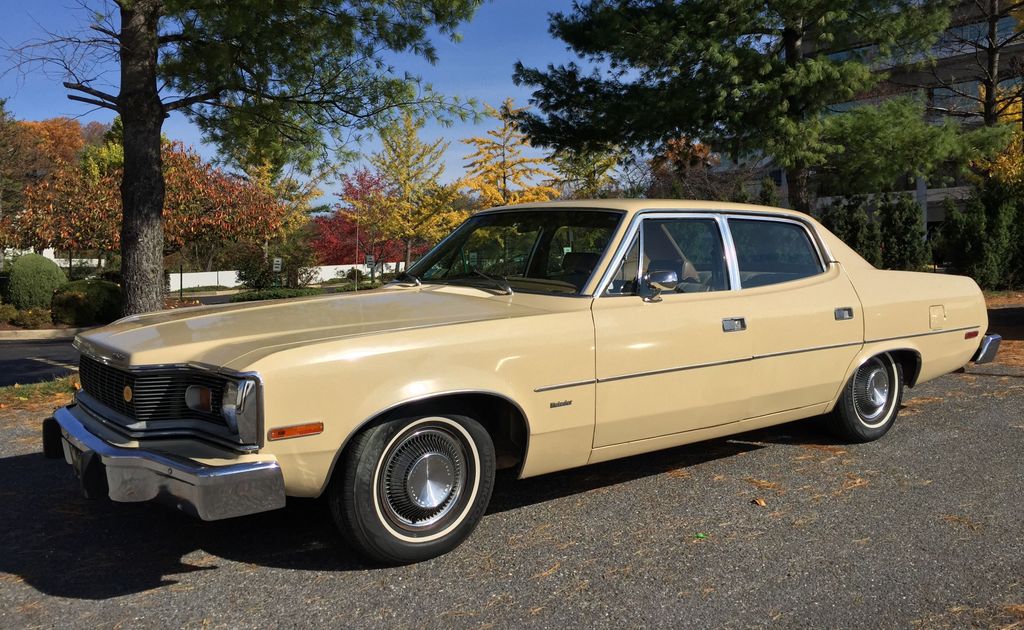
7. **AMC Matador**The AMC Matador, a distinct and often-forgotten classic pony car introduced in the early 1970s, is another vehicle that unequivocally deserves more enthusiastic attention. It presented a truly unique blend of contemporary style and robust performance during its production, a combination that set it apart from the more conventional offerings of the time. Its individuality is precisely what makes it so intriguing today.
One cannot help but be captivated by the Matador’s bold design, which showcased a wide stance and aggressively defined lines. This striking visual presence ensures that the Matador commands attention at any classic car gathering, standing out with an aesthetic that is both confident and slightly unconventional. It was a car that wasn’t afraid to be different, and that daring spirit continues to resonate with enthusiasts.
Beneath its distinctive sheet metal, the Matador offered a versatile range of engine options, catering to various performance appetites. You could find models equipped with everything from a practical 232 cubic inch I6 to a profoundly powerful 401 cubic inch V8. This array of choices provided ample performance for enthusiasts, allowing for personalization depending on whether one sought efficiency or outright muscle. Despite these compelling features, the Matador regrettably often flies under the radar when compared to other muscle cars. If you’re in search of something truly different, a car with character and capable performance that breaks from the norm, the AMC Matador might just be the perfect vehicle to explore.
The journey through the annals of overlooked automotive brilliance doesn’t end with our initial seven picks. Indeed, the pony car wars were a sprawling, fiercely competitive landscape, where numerous contenders vied for supremacy, often bringing innovative engineering and distinctive styling to the table. While many of these vehicles ultimately faded from mainstream memory, their stories are crucial chapters in the broader narrative of American performance. Now, let’s continue our exploration, diving into another collection of hidden gems that truly deserve a second look, proving that true automotive passion uncovers greatness beyond the obvious.
Read more about: From Anemic to Awkward: Unmasking 15 Muscle Cars That Truly Missed the Mark – And Why We Can’t Forget Them

8. **1968 AMC Javelin SST**AMC’s entry into the pony car fray, the Javelin, arrived in 1968 with serious intentions, and its SST trim level exemplified this commitment. While AMC never commanded the colossal marketing budgets of the Detroit Big Three, their engineers crafted a vehicle that was undeniably competitive, designed to go head-to-head with established rivals. The Javelin SST offered a compelling blend of style and substance that, for many, remains deeply underrated.
Under the hood, enthusiasts could option the Javelin SST with a potent 343-cubic-inch V8 engine, an powerplant capable of pushing out a respectable 280 horsepower. This robust engine, combined with an optional “Go Package,” ensured that the Javelin SST had the requisite muscle to perform. It boasted impressive numbers, offering spirited acceleration and a satisfying exhaust note that spoke to its performance pedigree.
Beyond its powertrain, the Javelin SST distinguished itself with clean, muscular lines and a stance that was notably wider than many of its competitors, hinting at a more planted and stable driving dynamic. Despite these compelling attributes and a respectable production run of nearly 56,000 Javelins in 1968, the model struggled to build the lasting legend it deserved, often overshadowed by flashier, more heavily advertised competition. For collectors and enthusiasts today, it represents a fantastic opportunity to acquire a piece of genuine automotive history.
Read more about: The Automotive Hall of Shame: 15 Infamous Rides and Their Reputations for Bad Drivers and Dangerous Flaws
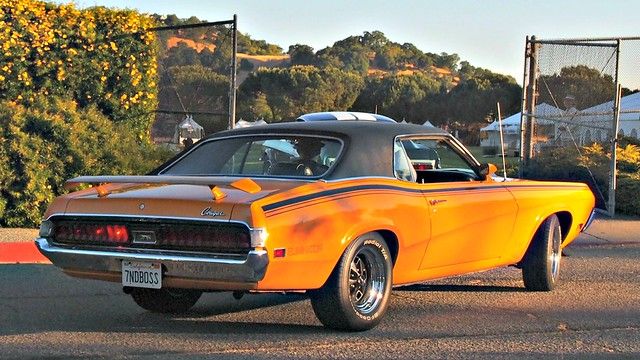
9. **1970 Mercury Cougar Eliminator**The Mercury Cougar initially carved out its niche as a more upscale, refined sibling to the Ford Mustang, aiming for a demographic that appreciated both performance and luxury. However, by 1970, the introduction of the Eliminator package transformed the Cougar into a genuine performance threat, shedding some of its “gentleman’s pony car” image for an undeniably aggressive demeanor. This specialized trim was Mercury’s emphatic statement in the escalating pony car wars.
What made the 1970 Cougar Eliminator truly special was the formidable array of powertrains available to buyers. Enthusiasts could spec this model with legendary engines such as the high-revving Boss 302, the monstrous 428 Cobra Jet, or the versatile 351 V8. Each engine option provided a distinct flavor of performance, but all guaranteed a driving experience that was anything but subtle, further underscored by an upgraded suspension system.
Visually, the Eliminator package left no doubt about its intentions, adorning the Cougar with aggressive looks, including a distinctive rear spoiler, blacked-out grilles, and bold striping that immediately signaled its sporting aspirations. With only about 2,200 Eliminators built that year, this model was a rare sight even when new. Despite its genuine performance chops and striking appearance, the Cougar Eliminator struggled to escape the pervasive shadow of the Mustang.
Car Model Information: 1995 Mercury Cougar XR7
Name: Mercury Cougar
Caption: 1969 Mercury Cougar (first generation)
Manufacturer: Mercury (automobile)
Layout: Front-engine, rear-wheel-drive layout
ModelYears: 1967–1997,1999–2002
Class: Pony car,Personal luxury car,Mid-size car,Sport compact
Categories: 1960s cars, 1970s cars, 1980s cars, 1990s cars, 2000s cars
Summary: The Mercury Cougar is a series of automobiles that was sold by Mercury from 1967 to 2002. The model line is a diverse series of vehicles; though the Cougar nameplate is most commonly associated with two-door coupes, at various stages in its production, the model also was offered as a convertible and a hatchback. During its production as the mid-size Mercury line, the Cougar was also offered as a four-door sedan and five-door station wagon.
In production for 34 years across eight generations (skipping the 1998 model year), the Cougar is second only to the Grand Marquis (36 years) in the Mercury line for production longevity. 2,972,784 examples were produced, making it the highest-selling Mercury vehicle. During the 1970s and 1980s, the marketing of the Mercury division was closely associated with the Cougar, with promotional materials advertising Mercury dealers as “The Sign of the Cat” with big cats atop Lincoln-Mercury dealer signs. Cat-related nameplates were adopted by other Mercury lines, including the Bobcat and Lynx.
During its production, the Cougar was assembled at the Dearborn Assembly Plant (part of the Ford River Rouge Complex) in Dearborn, Michigan from 1967 until 1973, San Jose Assembly (Milpitas, California) from 1968 into early 1969, Lorain Assembly (Lorain, Ohio) from 1974 until 1997, and at Flat Rock Assembly (Flat Rock, Michigan) from 1999 through 2002.
Get more information about: Mercury Cougar
Buying a high-performing used car >>>
Brand: Mercury Model: Cougar
Price: $10,995 Mileage: 37,589 mi.
Read more about: 18 Classic Boomer Cars Millennials Don’t Want: Why Younger Generations Pass on These Icons

10. **1971 Plymouth Duster 340**While technically categorized as a compact, the 1971 Plymouth Duster 340 possessed the spirit, and more importantly, the performance of a true pony car killer. This often-overlooked model represented Plymouth’s answer to offering budget-friendly yet highly potent performance, embodying the essence of accessible speed in the early 1970s. Its lightweight construction coupled with a formidable small block engine created a recipe for surprising acceleration.
The heart of the Duster 340 was its robust 340 cubic-inch small block V8 engine, which delivered a healthy 275 horsepower. Crucially, this power was channeled through a vehicle weighing around a mere 3,100 pounds. This exceptional power-to-weight ratio allowed the Duster 340 to achieve surprising speed off the line, making it a formidable competitor on both the street and the drag strip. It was a car that delighted drivers with its raw, unadulterated grunt and nimble character.
Plymouth’s strategy with the Duster 340 was ingenious: offer maximum performance in a no-frills, affordable package. While over 12,000 units of the 340s were built in 1971, the Duster line as a whole is often remembered more for its economy car iterations. However, in recent years, discerning enthusiasts and collectors have begun to fully appreciate the inherent value and performance capabilities of this model.
Car Model Information: 2024 Ford F-150 XLT
Name: Plymouth Duster
Caption: 1970 Plymouth Duster 340
Manufacturer: Plymouth (automobile)
Production: 1969–1976
ModelYears: 1970–1976
Assembly: Hamtramck, Michigan,Commerce, California,Fenton, Missouri,Windsor, Ontario
Designer: Milt Antonick and Neil Walling
Class: Compact car
BodyStyle: coupe
Layout: Front-engine, rear-wheel-drive layout
Platform: Chrysler A platform
Related: Plymouth Valiant,Dodge Dart
Engine: {{convert,198,cuin,L,1,abbr=on,Chrysler Slant 6 engine,Straight-six engine
Abbr: on
Transmission: manual transmission,4-speed manual,TorqueFlite
Wheelbase: 108.0 in
Predecessor: Plymouth Barracuda
Successor: Plymouth Volare,Plymouth Gran Fury
Categories: 1970s cars, All Wikipedia articles needing clarification, All articles with dead YouTube links, Articles with dead YouTube links from February 2022, Articles with short description
Summary: The original Plymouth Duster is a semi-fastback two-door coupe version of the compact-sized Plymouth Valiant automobile that was marketed by Plymouth in the U.S. from 1970 until 1976 model years.
Get more information about: Plymouth Duster
Buying a high-performing used car >>>
Brand: Plymouth Model: Duster 340
Price: $41,604 Mileage: 9,645 mi.
Read more about: Unearthing Hidden Gems: 14 Overlooked Muscle Cars That Offer Serious Performance Without Breaking the Bank for Savvy Collectors

11. **1969 Pontiac Firebird Sprint**When the topic of Pontiac Firebirds arises, most enthusiasts immediately recall the illustrious Trans Am or the mighty 400 Ram Air variants. However, nestled within the Firebird lineup of 1969 was a truly unique offering that demonstrated Pontiac’s willingness to innovate beyond brute force: the OHC (Overhead Cam) inline-six Sprint model. This car offered a very different, yet equally engaging, driving proposition.
The 1969 Firebird Sprint was powered by an advanced OHC inline-six engine, available in configurations pushing out between 230 to 250 horsepower. While these figures might not rival the V8 giants, the OHC six was a sophisticated powerplant, known for its smooth operation and surprising flexibility. More critically, its lighter front end contributed to a more balanced chassis, resulting in crisp and responsive handling.
Pontiac’s vision for the Sprint was bold; it was explicitly aimed at the European market and drivers who prioritized handling dynamics and engine refinement over sheer, raw horsepower. This nuanced approach, however, unfortunately did not resonate strongly enough with the predominantly V8-hungry American market, and consequently, the Firebird Sprint was discontinued by 1970. Today, it stands as a fascinating testament to an alternative philosophy within the pony car segment.
Car Model Information: 1983 Pontiac Firebird Trans Am 2D Coupe
Name: Pontiac Firebird
Caption: The second, third, and fourth generations of,the Pontiac Firebird Trans Am
Manufacturer: Pontiac (automobile)
Production: February 23, 1967 – August 30, 2002
ModelYears: 1967 – 2002
Class: Pony car,Muscle car
Platform: GM F platform
Related: Chevrolet Camaro
Layout: Front engine, rear-wheel-drive layout
Categories: 1970s cars, 1980s cars, 1990s cars, 2000s cars, All articles with dead external links
Summary: The Pontiac Firebird is an American automobile built and produced by Pontiac from the 1967 to 2002 model years. Designed as a pony car to compete with the Ford Mustang, it was introduced on February 23, 1967, five months after GM’s Chevrolet division’s platform-sharing Camaro. This also coincided with the release of the 1967 Mercury Cougar, Ford’s upscale, platform-sharing version of the Mustang.
The name “Firebird” was also previously used by GM for the General Motors Firebird series of concept cars in the 1950s.
Get more information about: Pontiac Firebird
Buying a high-performing used car >>>
Brand: Pontiac Model: Firebird
Price: $22,991 Mileage: 38,257 mi.
Read more about: Beyond the Legends: 15 Affordable Classic Pontiacs Every Enthusiast Should Consider for Their Garage
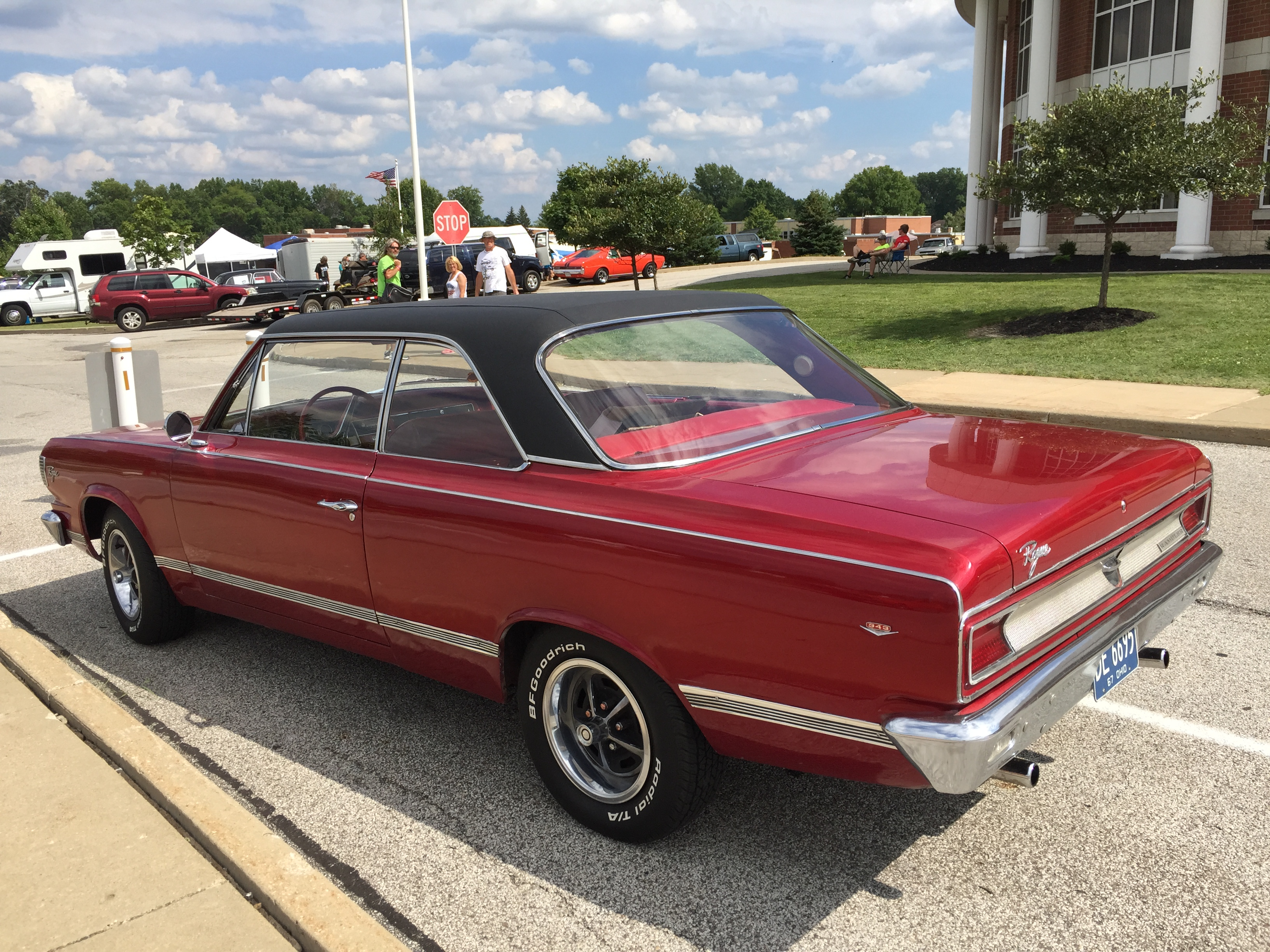
12. **1967 Rambler Rogue V8**Even among die-hard muscle car aficionados, the 1967 Rambler Rogue V8 often slips through the cracks, a testament to its profoundly understated nature. AMC, through its Rambler brand, essentially took a basic compact car and discreetly endowed it with serious performance, without any of the flashy accouterments that typically defined the pony car segment. It’s a classic sleeper, a car that offered far more than its unassuming exterior let on.
Underneath its modest sheet metal, the 1967 Rambler Rogue could be specified with a potent 343 cubic-inch V8 engine, delivering a substantial 280 horsepower. This powerful V8 was stuffed into a relatively lightweight, compact body. When paired with the available four-speed manual transmission, this combination transformed the humble Rogue into a genuinely quick machine, boasting serious torque that could surprise many a driver.
Unlike its more flamboyant competitors, the Rogue V8 eschewed bold stripes, aggressive scoops, or prominent badging. It was, quite simply, a basic car imbued with an unexpected level of performance. This lack of visual fanfare, while appealing to some, also contributed to its anonymity. Only a few thousand units were ever made, making them quite rare finds today for collectors seeking an authentic, no-nonsense performance car.
Car Model Information: 2024 Ford F-150 XLT
Name: Rambler American
Caption: Second generation: 1962 convertible
Manufacturer: American Motors Corporation
Production: 1958–1969
Assembly: Kenosha, Wisconsin,Brampton, Ontario,Tehran,Mexico City,Pretoria,Port Melbourne, Victoria
Layout: FR layout
Platform: AMC’s “junior cars”
Predecessor: Nash Rambler,Nash Metropolitan
Successor: AMC Hornet
Class: Compact car
Categories: 1960s cars, AMC vehicles, All articles with unsourced statements, Articles with short description, Articles with unsourced statements from August 2025
Summary: The Rambler American is a compact car produced by American Motors Corporation (AMC) from 1958 until 1969. Representing the second incarnation of the influential compact Rambler lineage that originated with AMC’s forerunner, Nash Motors, in 1950. This version continued to be marketed under the Nash and Hudson marques during the 1954 and 1955 model years following the merger of the two automakers in 1954.
The Rambler American spanned three generations: 1958–1960, 1961–1963, and 1964–1969. Its final model year, 1969, was the last automobile to carry the historic Rambler name in the U.S. and Canadian markets. The Rambler American was also marketed or assembled under license in Australia, Iran, Mexico, Argentina, and South Africa. The Rambler American was available in right-hand drive versions. AMC also shipped CKD units to be assembled in other countries.
The compact Rambler American was among the lowest-priced cars built in the U.S., earning popularity for its low cost of ownership. Numerous victories in the Mobil Economy Run competitions validated this reputation. While initially lauded for its practicality, the American’s image expanded with the optional second-generation AMC V8 engine in late 1966. This transformation made them compact “muscle” models, culminating in the 390 cu in (6.4 L) version developed with Hurst Performance, marketed as the “SC/Rambler”.
The Rambler American platform also served as the foundation for other designs. A youth-oriented concept car, the 1964 Rambler Tarpon, showcased a fastback design that foreshadowed the styling of the 1965 Rambler Marlin. The platform transitioned to sporty pony cars with the 1968 AMC Javelin. It was further reconfigured for its replacement model, the 1970 AMC Hornet. The Rambler American exemplifies AMC’s strategic agility, blending economy, innovation, and performance.
Get more information about: Rambler American
Buying a high-performing used car >>>
Brand: Rambler Model: Rogue V8
Price: $41,604 Mileage: 9,645 mi.
Read more about: Driven into the Sunset: Exploring 14 Iconic American Car Brands That Vanished After Their Heyday
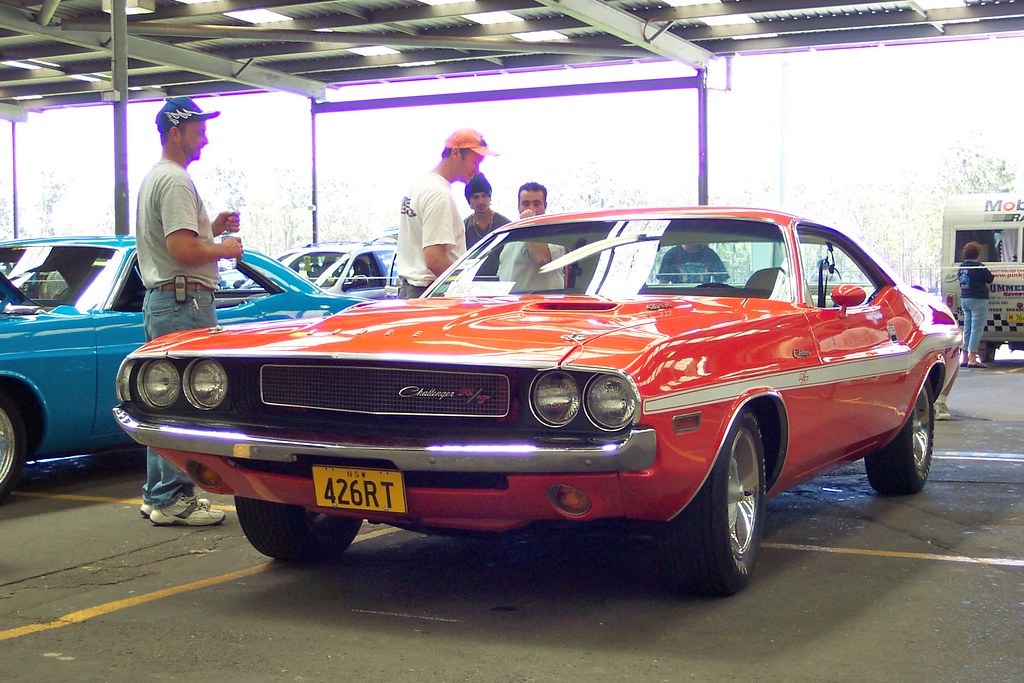
13. **1970 Dodge Challenger SE**When the iconic Dodge Challenger is mentioned, the mind almost instinctively conjures images of the legendary R/T trim. However, within the Challenger’s debut year of 1970, an often-forgotten variant offered a distinctly different interpretation of the pony car formula: the Challenger SE, or Special Edition. This trim brought a touch of personal luxury to the muscle car genre, bridging performance with enhanced comfort.
Crucially, opting for the SE trim did not mean sacrificing performance. Buyers could still equip their Challenger SE with potent engines like the formidable 383 or the even more imposing 440 cubic-inch V8s, ensuring that the car retained its muscle car credentials. The SE package complemented this power with a suite of upscale features designed to enhance the driving experience beyond just raw acceleration.
The distinguishing characteristics of the Challenger SE were found in its appointments. It boasted a more luxurious interior, often featuring leather trim, a vinyl top for a sophisticated exterior accent, and distinctive hidden headlights that provided a sleek, uninterrupted front fascia. The Challenger SE found itself straddling two categories—performance and personal luxury—and quietly faded from the spotlight, despite enjoying comparable production numbers.
Car Model Information: 2019 Dodge Challenger R/T Scat Pack
Name: Dodge Challenger
Production: 1969–1974,1977–1983,2008–2023
ModelYears: 1970–1974,1978–1983,2008–2023
Caption: 2015 Dodge Challenger SRT Hellcat
Manufacturer: Dodge
Categories: 1970s cars, 1980s cars, 2000s cars, 2010s cars, 2020s cars
Summary: The Dodge Challenger is the name of three generations of automobiles produced by the American automobile manufacturer Dodge. However, the first use of the Challenger name by Dodge dates back to 1959 for marketing a “value version” of the full-sized Coronet Silver Challenger.
From model years 1970 to 1974, the first-generation Dodge Challenger pony car was built using the Chrysler E platform in hardtop and convertible body styles sharing significant components with the Plymouth Barracuda.
The second generation, from model years 1978 to 1983, was a rebadged Mitsubishi Galant Lambda / Sapporo, a coupe version of an economical compact car.
The third and current generation is a full-size muscle car that was introduced in early 2008 initially as a rival to the evolved fifth generation Ford Mustang and the fifth generation Chevrolet Camaro.
In November 2021, Stellantis announced that the 2023 model year would be the final model year for both the LD Dodge Charger and LA Dodge Challenger, as the company will focus its plans on electric vehicles rather than fossil fuel-powered vehicles, due to tougher emissions standards required by the Environmental Protection Agency for the 2023 model year. Challenger production ended on December 22, 2023, and the Brampton, Ontario, assembly plant will be re-tooled to assemble an electrified successor.
Get more information about: Dodge Challenger
Buying a high-performing used car >>>
Brand: Dodge Model: Challenger
Price: $33,392 Mileage: 41,509 mi.
Read more about: From Anemic to Awkward: Unmasking 15 Muscle Cars That Truly Missed the Mark – And Why We Can’t Forget Them

14. **1974 Pontiac Ventura GTO**The GTO badge holds immense reverence in the annals of muscle car history. However, by 1974, in an attempt to keep the legendary name alive amidst tightening emissions regulations and a shift in market tastes, Pontiac controversially affixed the GTO badge to its compact Ventura platform. This move resulted in a car that is often disavowed by purists, yet remains a fascinating, albeit contentious, chapter in the GTO legacy and pony car evolution.
The 1974 Ventura GTO came equipped with a 350 cubic-inch V8 engine, and while it featured a functional hood scoop and Rally II wheels, its performance was a distinct departure from the thundering GTOs of yesteryear. It simply couldn’t match the unbridled power or the raw, visceral image of its predecessors. This led to a perception among many fans that it was a dilution of the GTO name, rather than a worthy successor.
Despite its perceived shortcomings compared to earlier GTOs, the 1974 Ventura GTO was not inherently slow for its era, nor did it lack competence. Built on the Nova-based X-body chassis, it offered decent handling characteristics, a significant attribute in a period when many American cars were becoming increasingly soft. Ultimately, the 1974 Pontiac Ventura GTO sold poorly and lasted only one model year under the GTO moniker, further cementing its underrated status.
Car Model Information: 2024 Ford F-150 XLT
Name: Pontiac GTO
Caption: 2005 Pontiac GTO
Manufacturer: Pontiac (automobile),Holden
Class: Mid-size car,Compact car,Mid-size car
Production: 1963–1974,2003–2006
Predecessor: Pontiac Tempest
Layout: Front-engine, rear-wheel-drive layout
ModelYears: 1964-1974 2004-2006
Categories: 1970s cars, 2000s cars, All articles with unsourced statements, Articles with short description, Articles with unsourced statements from October 2008
Summary: The Pontiac GTO is a front-engine, rear-drive, two-door, and four-passenger automobile manufactured and marketed by the Pontiac division of General Motors over four generations from 1963 until 1974 in the United States — with a fifth generation made by GM’s Australian subsidiary, Holden, for the 2004 through 2006 model years.
The first generation of the GTO is credited with popularizing the muscle car market segment in the 1960s. Some consider the Pontiac GTO to have started the trend with all four domestic automakers offering a variety of competing models.
For the 1964 and 1965 model years, the GTO was an optional package on the intermediate-sized Pontiac LeMans. The 1964 GTO vehicle identification number (VIN) started with 22, while the 1965 GTO VIN began with 237. The GTO was designated as a separate Pontiac model from 1966 through 1971 (VIN 242…). It became an optional package again for the 1972 and 1973 intermediate LeMans. For 1974, the GTO was an optional trim package on the compact-sized Ventura.
The GTO model was revived for the 2004 through 2006 model years as a captive import for Pontiac, a left-hand drive version of the Holden Monaro, itself a coupé variant of the Holden Commodore.
Get more information about: Pontiac GTO
Buying a high-performing used car >>>
Brand: Pontiac Model: Ventura GTO
Price: $41,604 Mileage: 9,645 mi.
Read more about: Beyond the Legends: 15 Affordable Classic Pontiacs Every Enthusiast Should Consider for Their Garage
As we put the brakes on this exhilarating tour of the pony car world’s unsung heroes, it becomes abundantly clear that automotive greatness isn’t solely reserved for the marques plastered on bedroom walls. The models we’ve explored, from the nimble AMC Javelin SST to the controversial 1974 Pontiac Ventura GTO, each tell a compelling story of innovation, audacious design, and surprising performance. They remind us that the true depth of the pony car phenomenon extended far beyond the mainstream, offering enthusiasts a rich tapestry of choices, many of which are only now receiving the spotlight they’ve always deserved. So next time you’re delving into classic cars, remember these hidden gems. You might just discover your next automotive obsession lurking in the shadows of history.

